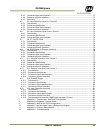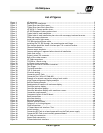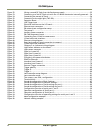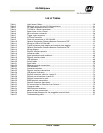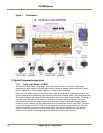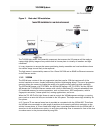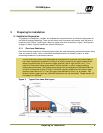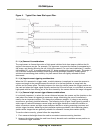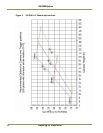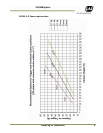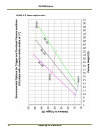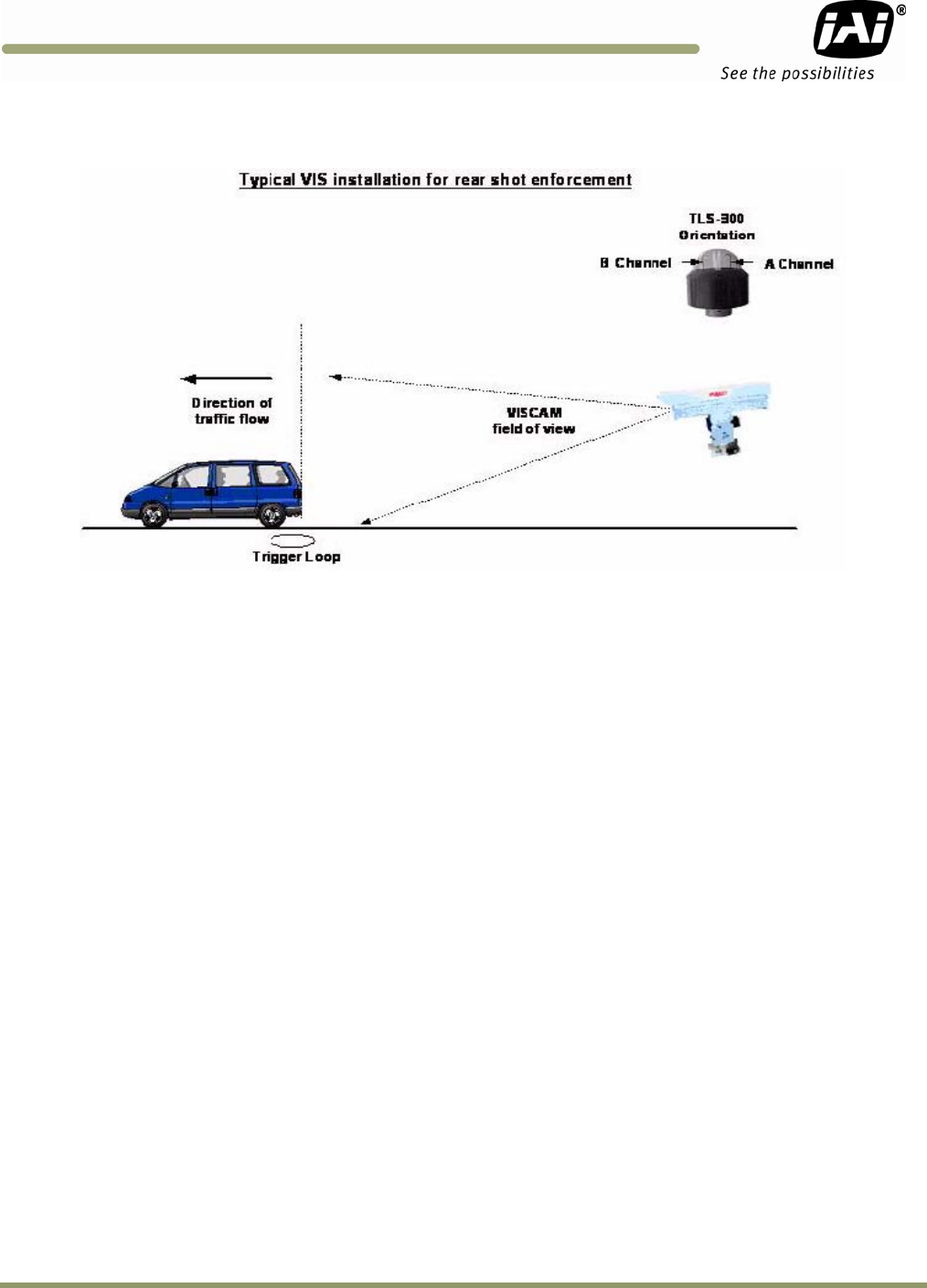
Introduction 3
VIS-CAM System
Figure 2. Back shot VIS installation.
The TLS-300 light sensor is an essential component that ensures the VIS cameras will be ready to
capture high quality images of any vehicle and its license plate in virtually all weather and light
conditions.
It is very important to ensure that sensor positioning closely resembles real road conditions where
the vehicle image is most likely to be captured.
The light sensor is connected by means of the J-Panel VJP-300 and an RS485-to-Ethernet converter
to the Ethernet switch.
1.3.2 VISCAM
The VISCAM uses a state-of-the-art progressive interline transfer CCD that captures all of the
vertical resolution at once, thereby eliminating field-to-field imaging delays. The use of progressive
scanning allows the camera to freeze the motion of a rapidly moving vehicle at high resolution.
The VISCAM 300 houses a JAI TS-9720EN, the VISCAM 350 houses a JAI TS-1327EN, and the VISCAM
400 houses the TS-2030EN Ethernet camera with a built in IBM Power PC using an embedded Linux
O/S and 64Mb memory for various operations, such as frame store, JPEG compression, vehicle
fingerprint extraction, license plate find, running applications, and so on.
When the TLS-300 Traffic Light Sensor is used to control the VISCAM exposure settings, no moving
parts (such as an auto-iris lens) are included in the VIS system. This helps ensure high reliability for
the system.
A 12.5 mm to 75 mm manual zoom lens is provided as a standard with the VISCAM 300. This allows
the VISCAM to be mounted in a wide range of positions while ensuring sufficient resolution on the
vehicle license plates. A 35 mm fixed focal length lens is provided standard with the VISCAM 400. A
zoom lens is also available as an option. An anti-glare polarizing filter is mounted in front of the lens
to reduce smear in the picture caused by sun glints.



